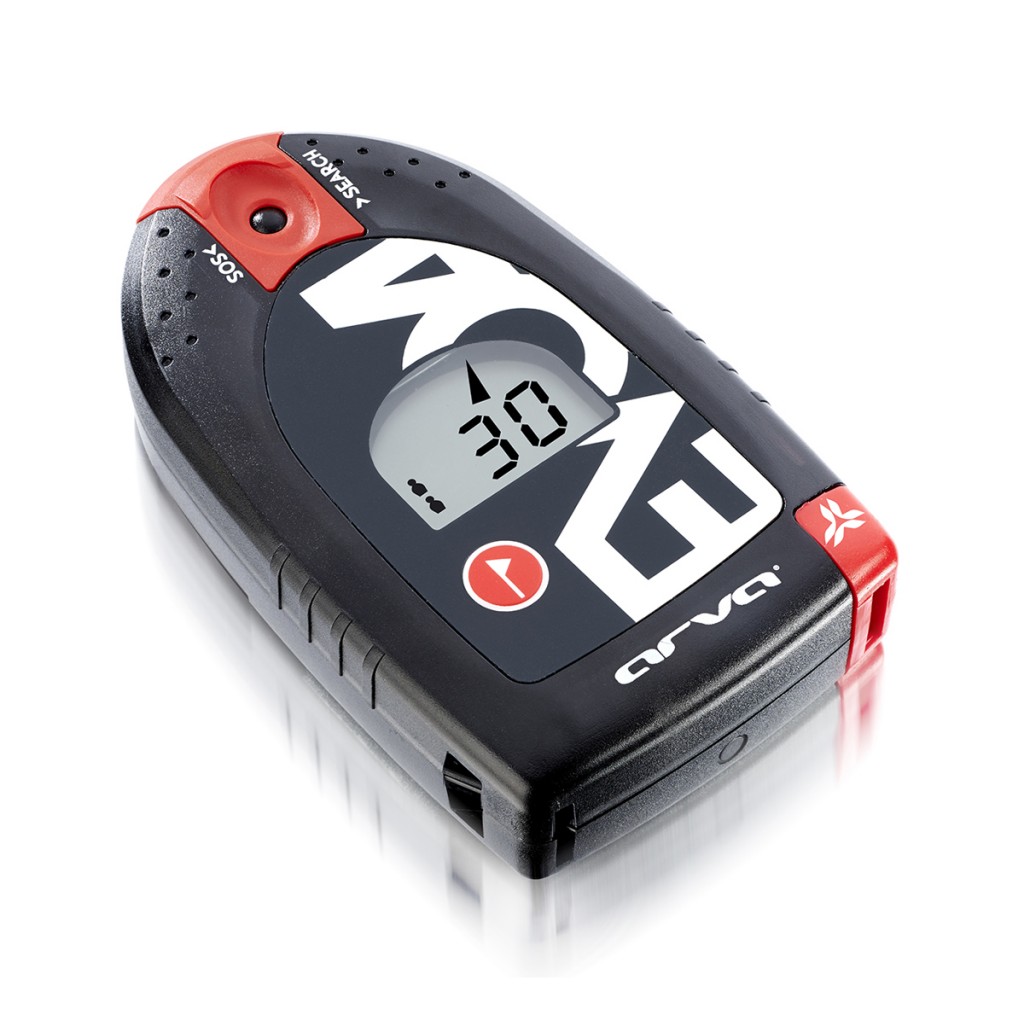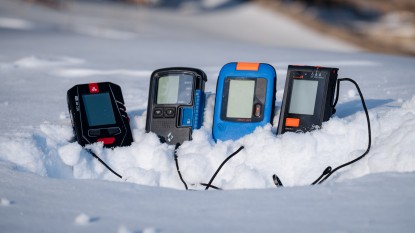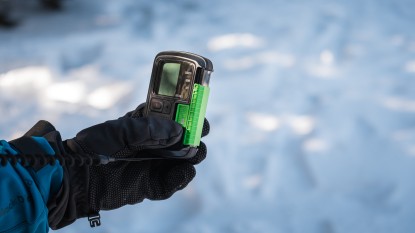ARVA Evo4 Review
Our Verdict
Our Analysis and Test Results
The Arva Evo4 is an intuitive beacon that is easy to use and affordably priced. It is the lowest priced triple antenna beacon we tested and the only model to cost under $300 and still feature a flagging/marking function. The Evo4's interface is perfect for the novice or less practiced users and more experienced users alike. It was a solid contender for our Best Buy Award but only barely lost out to the BCA Tracker2 because the Tracker would consistently allow for faster bracketing during the fine/bracketing stage of the search, which is where the most users mess-up. We also liked the Tracker2's slightly smaller profile and the fact its directional arrows didn't disappear until 2 meters compared to the Evo4's 3 meters. Once we were well practiced, this 1-meter difference was rarely an issue though. The Evo4 does have plenty of advantages over the Tracker2, namely its multiple burial functionality.
Performance Comparison
Range
Arva claims to have a 40-meter range/search strip width. While we don't necessarily discredit this, during our real-world range testing, we didn't tend to pick up a signal that far away. Instead, our findings with signal acquisition were more like 35-38 meters away. While the Evo4 offers several advantages over the previous Evo3+, range isn't one of them. Both beacons feature around the same maximum range. The Evo4's range is a little greater than the original Backcountry Access Tracker DTS, but not quite as long as the Tracker2 or the Pieps DSP Sport. While maximum range shouldn't be the first thing you look for in a beacon, it does mean that with the Evo4 you need to be a little bit more careful than with other beacons while searching for the initial signal.
Ease of Finding a Single Victim and Speed
Moving the Evo4 from Send to Search is super easy, you just pull up on the big red tab at the top of the beacon. Once our testers acquired a signal, the Evo4 did an excellent job through the “coarse search” and kept us on the flux line very efficiently with its audible tones and directional arrows. Further than 10 meters from the victim we never felt like we truly had to slow down.
Ease of Use in Fine Search
Once we got inside of 10 meters away and we moved the beacon to the surface of the snow (as you should with all beacons), the Evo4's directional arrows and audible tones continued to be intuitive and easy to follow. During the bracketing stage, it had average speed, and we didn't think it was as fast as the Backcountry Access Tracker2 or the Pieps Sport, but wasn't far behind and was comparable to the Arva Neo. We did think it was faster than the previous model, the Evo3+, and faster than the similarly priced Ortovox Zoom+.
One note on the Evo4's harness during the fine search. While it's a pretty snazzy feature, to put the Arva4 on, you need to insert the red tab that powers it up to help the wearer avoid an obvious, yet grave mistake. The harnesses lanyard for the beacon is a little short though, and our testers felt like it restricted our movement during the bracketing portion of the fine search. None of our testers felt like they couldn't overcome this shortcoming, but it was annoying.
Ease Of Use In Multiple Burial Situations
The best new feature of the Evo4 over the Evo3+ is its multiple burial function and almost more importantly the displays and interface surrounding this function. The new Evo4 features a simple marking function that uses a well-thought-out display and is activated by a red button with a flag on it.
When multiple signals are being received, the Evo4 has multiple burial victim icons displayed on the left side of the screen with 1, 2, or 3 little-people-looking icons. The distance to the next closest beacon is still displayed in the center of the screen. Once a victim has been marked (flagged) a little flag symbol appears next to the victim icon. If more than three signals are picked up, three dots appear below the lowest victim symbol to inform the user.
Features
The Evo4 features a “group check” mode to assist the user to more efficiently facilitate a function check, something that should be done with any beacon every time you head out into the backcountry for the day. To access this function simply hold down the “flag” button until “CH” appears on the display. Once in this mode, the Evo4 beeps if another beacon is between 0.5m and 1.5m away. The beacon emits a much louder tone if you get too close (less than 0.5m). Once you've finished your group check, press the flag button again to return to normal send mode.
Dislikes
The Evo4 is one of the chunkier/bulkier beacons out there. Its integrated strap is cool to keep users from forgetting to power-up their beacon before putting it on, but that means for pocket stowing users extreme care must be taken to not lose the little red on/off tab once the harness strap is unthreaded (unthreading is easy). If you do want to wear this beacon in your pocket, we strongly recommend putting some kind of keeper-cord on it. Another interesting point of note is that the Evo4's battery life is fairly average at 250 hrs, but you need 4 AAA batteries to achieve this. We are sure that this helps the Evo4's speed and processing, but it only adds to its heavier status and slightly bulkier than average size.
Best Applications
This beacon is a great choice for newer or less experienced users who don't want to spend a lot of money but still want a triple antenna and a flagging function.
Value
This is the best-priced beacon on the market to feature a flagging/marking function. The Evo4 was nearly the winner of our Best Buy award. It was just barely edged out by the Backcountry Access Tracker2 which was a little quicker and featured slightly longer range, but was also a little more and offers no flagging function.
Conclusion
The Arva Evo4 is an intuitive and simple-to-use beacon. We liked the price and the flagging/marking function, and it was an overall strong contender for our Best Buy Award. It performed better than the Evo3+ and several other products while searching for a single victim (the most important function) but wasn't quite as quick as the Backcountry Access Tracker2 in these side-by-side tests done by users with a wide range of abilities. It remains a very simple, quicker-than-average beacon at a fantastic price that features a dependable flagging/marking function.




